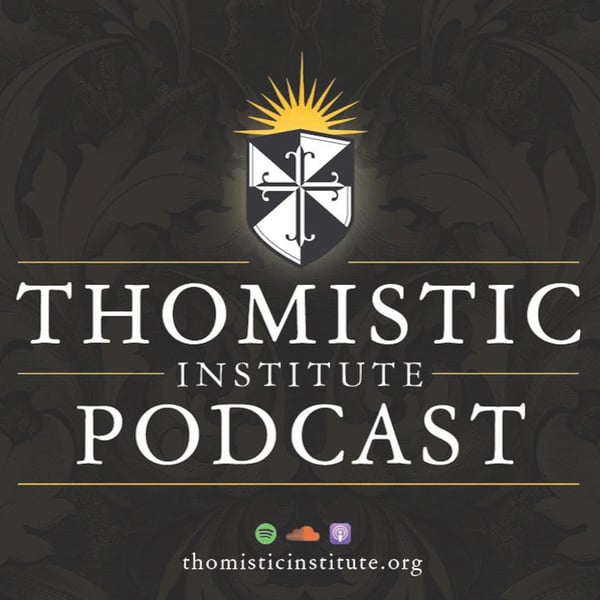The Place of the Altar and the Shape of the Font | Prof. Robin Jenson
The Thomistic Institute
The Thomistic Institute
4.8 • 729 Ratings
🗓️ 7 April 2020
⏱️ 55 minutes
🧾️ Download transcript
Summary
This lecture was given at Duke University on 27 February 2020.
Speaker Bio: Prof. Robin Jensen’s research and publication focuses on the relationship between early Christian art and literature and examines the ways that visual images and architectural spaces should be regarded as modes of theological expression. Her published essays and books contend that, in addition to interpreting sacred texts, visual images enhance liturgical settings, reflect the nature and content of devotional piety, and explicate ritual practices. She teaches courses on the character of late antique Christian and Jewish art, the history and evolution of Christian architecture, the iconography of the cross and crucifix, depictions of Christ and the Virgin Mary, and the place and controversies over images and idols in ancient and early medieval Christianity. Additionally, she has researched the practices, distinctive character, and material evidence of Christianity in ancient Roman North Africa. Her current project, tentatively titled "From Idols to Icons" (under contract with the University of California Press) examines the emergence of a Christian material piety in the fourth and fifth centuries. This work discusses the perceived danger of visual representations of divine beings, early controversies over the miraculous power of saints' shrines and relics, the sacralization of structures and geographical places, and the belief that images may facilitate the presence of holy persons in their absence.
For more information on this and other events go to thomisticinstitute.org/events-1
Transcript
Click on a timestamp to play from that location
| 0:00.0 | Winston Churchill once said about the reconstruction of the House of Commons when it was in the process of being rebuilt, he said this, |
| 0:11.0 | we shape our buildings and thereafter they shape us. |
| 0:17.0 | As someone who works with architects designing and renovating spaces for worship, |
| 0:23.6 | I think this is profoundly true, but it might be revised this way. |
| 0:29.6 | We build our churches and they inform our ideas about God and God's people. |
| 0:36.6 | Now, we may not always be conscious or always conscious of how the shape and the design and |
| 0:44.3 | furnishings of the places in which we, week after week, celebrate sacred liturgies. |
| 0:50.3 | Yet I can confidently affirm that from the largest elements to the smallest details, these spaces inform and convey our understanding of why we come and what we do there. |
| 1:05.0 | The design and decoration of our worship spaces communicate to us in non-verbally in powerfully effective |
| 1:15.1 | ways. |
| 1:17.0 | They are much more than mere shelters for the activity. |
| 1:21.2 | We rarely pay attention to them for themselves, but they are silent visual symbols that |
| 1:27.0 | partner with the audible embodied words |
| 1:29.5 | we sing and say and pray. |
| 1:33.2 | In other words, church buildings are far more than functional containers for our rituals, designed |
| 1:39.1 | to conveniently accommodate the directions laid out in our liturgical books, they are icons that express |
| 1:46.3 | the significance and purpose of our rituals. Moreover, they're communal icons as well as personal |
| 1:54.4 | or private devotional aids. We share them. We inhabit them together. They are the places where we encounter the sacred presence and there are spaces of holy |
| 2:05.3 | memories. |
| 2:06.3 | I'm going to get off my text from it and tell you a story. |
| 2:11.0 | Some of my time I have worked, I've been on the board of the Journal of the Architects Institute |
| 2:16.8 | of America called Faith |
... |
Please login to see the full transcript.
Disclaimer: The podcast and artwork embedded on this page are from The Thomistic Institute, and are the property of its owner and not affiliated with or endorsed by Tapesearch.
Generated transcripts are the property of The Thomistic Institute and are distributed freely under the Fair Use doctrine. Transcripts generated by Tapesearch are not guaranteed to be accurate.
Copyright © Tapesearch 2025.

